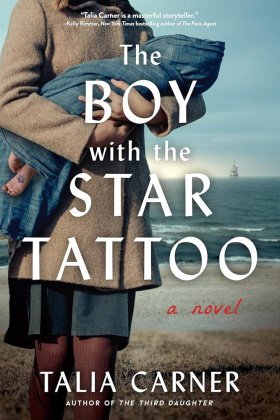It is a long walk to the station; Sharon will have to leave at six fifteen. The worst part is that, although she’s here, she won’t even be able to visit the church, where she hoped to start her inquiry.
“What was that language you spoke on the phone?” Anne-Marie asks.
“Hebrew. The language of the Bible. You saw my Israeli passport.”
“We love your people. My mother especially; she taught me to pray for them. We did it a lot when you had that war a couple of years ago.”
“Thanks. The Six-Day War in June 1967. A David versus Goliath story.”
“You were wonderful. Very inspiring.”
Inspiring in what way? What do they know about war in such a sleepy little enclave in the middle of nowhere?
Chapter Fifty-Two
Loire Valley, France
October 1969
Baking smells awaken Sharon minutes before her alarm clock goes off. It’s still pitch-dark outside when she comes downstairs, carrying her satchel and coat.
Madame Niquet introduces herself and serves her a fresh brioche. Sharon shaves butter from a small bowl and watches it melt in the brioche’s steaming center. When she’s done, she wants another but must rush to the station. The train might not even stop if there are no waiting passengers. She hopes she’ll have only a short wait in Tours for a train to Paris and then enough time to get back to Orly.
Madame Niquet fills Sharon’s coffee cup. Instead of stepping away, she pulls over a chair and sits down. Her gray hair is gathered in a chignon, and she’s missing a front tooth. Her fingers are veined and gnarled. “I was very happy to hear from my daughter that you are from the Holy Land,” she says.
“She told me that you pray for us. Thank you.”
“Once I had a guest from Palestine. A very considerate young man.”
“It’s Israel. That’s the name of my country.”
“I mean that it was Palestine at the time,” Madame Niquet says.
“When was that?”
“After the war. There were terrible food shortages, but this man gave his ration coupons to feed a child.”
Sharon gathers up her satchel. “Thank you for your hospitality. It’s a very long walk to the train station.” She stops to look at the woman. “Wait. Did you live here in 1946?”
Madame Niquet nods. “I was a war widow. My first husband was killed on the Maginot Line.”
“Sorry to hear that.” Sharon hates the platitudes she’s heard all her life yet can never come up with a better expression of sympathy. She takes a deep breath. “It’s a weird question, but did you happen to know a little boy with a blue tattoo at the bottom of his foot?”
“Daniel!” Madame Niquet explodes. “Of course. He lived right there.” She points toward the back window.
Sharon’s heart skips a beat. It can’t be this easy. No! Yes! She drops back onto her chair and searches her inside coat pocket for the letter that Uzi Yarden sent her. She encased it in a plastic sleeve for protection, and now her fingers shake as she straightens it on the table.
“That’s me! I wrote it,” Madame Niquet says. She points to the signature of the witness. “Evelyne Therrien, that was my name then. I remarried two years later.”
Thank you, Arthur Durand, Arnon Yarden. Sharon’s hand clutches her throat with the magnitude of the moment. Thank you! If it weren’t for you, I’d never have known to come to this forgotten little village. She glances at her watch. No way can she make the train if she stays even a minute longer. The next train passes by in three hours, and who knows when she’ll catch a connection to Paris in Tours? The doctor and his “clowns,” as Danny called them, will be waiting—or they’ll have disappeared on a shopping trip.
Yet how can she not hear the rest of the story?
“It says Benjamin-Pierre, not Daniel.” Sharon points to the letter.
“My friend had always hoped to have a son named Daniel. Since the baby was so young, it made no difference to him.”
Sharon places her hand on her heart. “Tell me everything.”
“How come you have this letter?”
“I’m on assignment to learn more about Daniel’s roots.”
Evelyne Niquet’s voice rises with excitement. “My Daniel? Where is he?”
“He’s an officer in the Israeli navy.”
“My little Daniel?” Evelyne Niquet’s tone is filled with wonder and tears. “He captains ships for Israel?”
Sharon nods. It’s too early to reveal that he’s in France, albeit very far from here. “Exactly.”
Evelyne Niquet counts on her fingers. “He must be twenty-seven.”
Her hands trembling, Sharon takes out copies of Danny’s photos from the January media write-ups. They are grainy but clear. One is an official portrait. In the other, he stands tall and erect in front of a battery of journalists.
The Frenchwoman looks at them, wipes her eyes, then brings the portrait to her lips and kisses it. “My little Daniel,” she whispers.
“Keep it,” Sharon says. “Tell me what happened before Mr. Yarden came.”

























